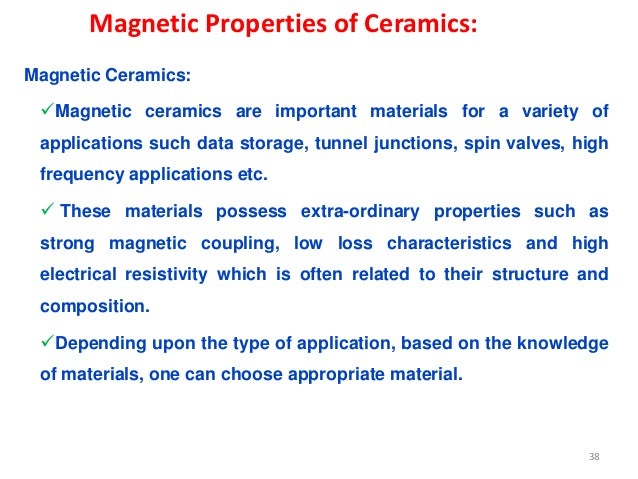Ceramic materials can be identified by their general properties like high hardness brittleness chemical stability and low thermal conductivity.
Properties of ceramics and their uses.
Ceramic composition and properties atomic and molecular nature of ceramic materials and their resulting characteristics and performance in industrial applications.
These material properties are utilized to produce number of commercial and domestic products such as pottery bricks advanced functional items etc.
In chemistry ceramics refers to any non metal non organic solid.
Ceramic engineers use this technique to tune the mechanical properties to their desired application.
But fine ceramics and porcelain are insulators that do not conduct electricity.
Ceramics are generally bad conductors.
Semiconductor ceramics can also be developed to conduct electricity depending upon the voltage applied and their temperature.
They may be as much as 96 gas by volume.
If ceramic is subjected to substantial mechanical loading it can undergo a process called ice templating which allows some control of the microstructure of the ceramic product and therefore some control of the mechanical properties.
Advanced ceramics and traditional ceramics are the main categories of ceramic materials.
Usually they are metal oxides that is compounds of metallic elements and oxygen but many ceramics.
Their varied chemical composition is very important because it includes a significant part of the 118 items of the periodic table.
People first started making ceramics thousands of years ago pottery glass and brick are among the oldest human invented materials and we re still designing brand new ceramic materials today things like catalytic converters for today s cars and high temperature superconductors for tomorrow s computers.
Some ceramics cubic boron nitride are good conductors of electricity.
Some ceramic foams are less brittle than their solid counterpart because air pockets may prevent cracks in the material from spreading.
Table of contents.
Ceramic products are hard porous and brittle.
Ceramic cups and pottery are not the only uses of ceramics the word ceramics has a very broad definition.
As a result they are used to make pottery bricks.
Industrial ceramics are commonly understood to be all industrially used materials that are inorganic nonmetallic solids.
Ceramic foams are generally less strong than a solid ceramic but may be very strong relative to their weight.





























